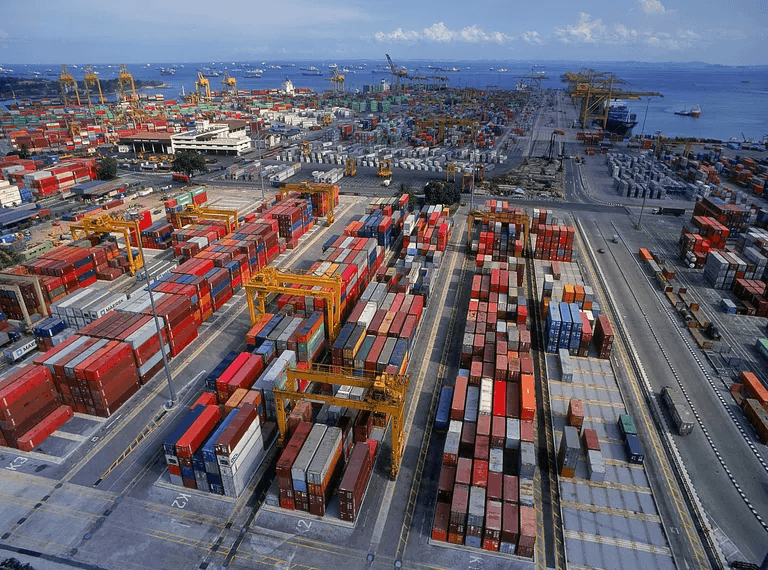Singapore’s future : Good, not great
July 19, 2018 | Expert Insights

Oxford analysts in a report said that Singapore’s future looks “good, not great” with its continued manufacturing reliance. While emerging Asian cities will boom on the service sector’s pick up.
Background
The Republic of Singapore is an island city-state in South-East Asia. The island gained freedom from Colonial powers in 1963 as a part of Malaysia and ceded 2 years later in 1965.
The general election of 1959 was probably the most defining election in the country’s history, as it brought into power Lee Kuan Yew of the People’s Action Party (PAP), which has remained in power ever since. Lee Kuan Yew served for 30 years and has been credited as responsible for the rapid growth it saw, from a “third world” country to a financial hub- as well as a strictly authoritarian rule.
Independent Singapore was admitted to the United Nations in 1965, and became a member of the Commonwealth of Nations on 15 October 1965. On 22 December 1965, it became a republic, with Yusof bin Ishak as the republic's first President.Thereafter commenced Singapore's struggle to survive and prosper on its own. It also had to create a sense of national identity and consciousness among a disparate population of immigrants.
The Employment Act and the Industrial Relations (Amendment) Act were passed in 1968 to promote industrial peace and discipline among the workforce.The Economic Development Board was reorganized in 1968 and the Jurong Town Corporation and the Development Bank of Singapore were set up in the same year.In 1979, after the shock of two oil crisis, the Government started a program of economic restructuring. This was achieved by modifying education policies, expanding technology and computer education, offering financial incentives to industrial enterprises and launching a productivity campaign.
For a country that lacks territory and natural resources, Singapore's economic ascension is considered nothing short of remarkable. By embracing globalization, free-market capitalism, education, and strict pragmatic policies, the country has been able to overcome their geographic disadvantages and become a leader in global commerce.As of 2017, Singapore has the 3rd highest GDP per capita in the world, and is 5th on the United Nations’ Human Development Index.
Analysis
Oxford Economics Ltd. released a research note on Wednesday, and it seems to be skeptical about Singapore’s long term growth prospects.Aging demographics and rising labor costs will weigh on the city-state, which focused on a significant manufacturing sector to support growth, economists said.
According to the report, Singapore stands out against a landscape of emerging Asia cities that are relying more and more on services to increase growth. “The days when Singapore’s manufacturing competitiveness was self-evidently great are long over,” the economists added.
“Singapore’s manufacturing sector faces both rising competition within the region and a risk of rising labor costs” from an aging population and immigration restrictions.While the Oxford economists see “modest” growth in manufacturing productivity through 2022, the sector’s employment will flat-line and exports probably will grow in line with world trade instead of outperforming.
The Oxford report follows a note earlier this week from analysts at DBS Group Holdings Ltd. in Singapore, outlining the longer-term challenges. The DBS note stated that, Singapore will be “good, but no longer distinctive” through 2030, with unfavorable demographics holding down growth at about 2% to 2.5 %.
The DBS note compares with an average 7.9 % growth a year from 2018 to 2022 forecast for Ho Chi Minh City by Oxford economists. The city’s financial services is estimated to rise 10.6% and transport and communications 8.5 % over the same period.
Finance Minister Heng Swee Keat at the 2018 Global Outlook Forum spelt out three elements that are key to helping Singapore navigate an increasingly complex and unpredictable future.They were clear values, good governance and leadership, and building high levels of trust both in and outside Singapore.Mr Heng said, "As a small nation, we have thrived on being an open and constructive player on the international stage. We must continue to stay open, and build the cross-cultural social capital and relationships that will allow us to harness the benefits of globalisation."
Counterpoint
On the other hand, the DBS analysts do see growth-cushioning factors for Singapore. Factors such as the government’s healthy appetite for cutting-edge technologies, and its potential to increase the share of exports to neighbors in the region, which has remained around 20% for the past 15 years, according to the note.
Assessment
Our assessment is that Singapore’s model of restricting freedom for business is facing a gloomy forecast for its economy. We feel that the aging population and immigration restrictions in Singapore will be the causes for low growth in the future. We believe that Singapore could reform their social security system and employment regulations for a better economic future.








Comments